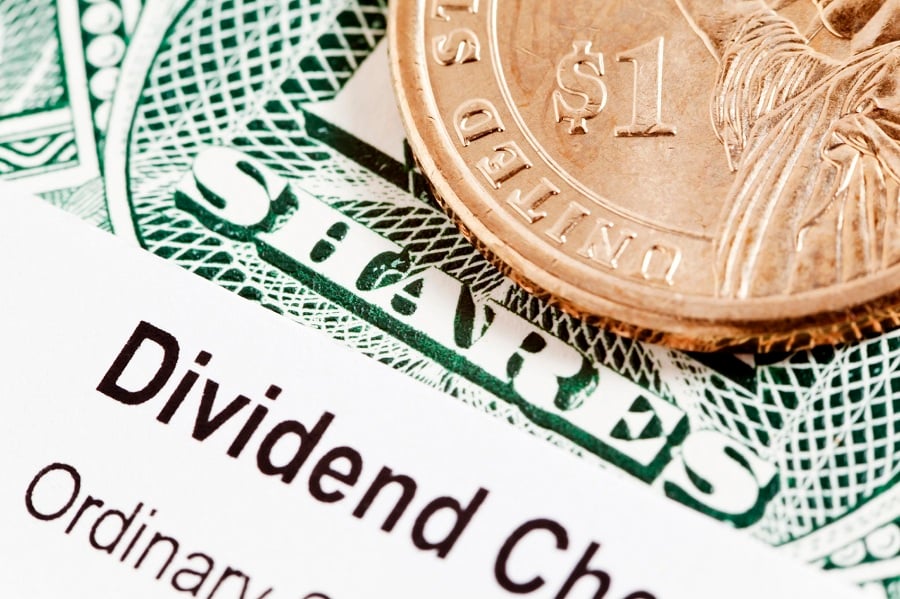The five-year dividend-investing rally might be losing momentum, but that doesn't mean investors should abandon ship just yet.
Even on the heels of a record aggregate dividend payout by S&P 500 Index companies of $351 billion and a string of double-digit annual payout increases, investors are making knee-jerk moves out of dividend-payers as the Federal Reserve moves closer to its first interest-rate hike in nearly a decade.
The Fed is still on the fence over whether it will introduce a nominal hike to short-term rates this year or next, but investor nervousness is illustrated by
recent outflows from two popular dividend exchange traded funds.
The $13 billion SPDR S&P Dividend ETF (SDY) has suffered nearly $790 million in outflows so far this year, and the $24.5 billion Vanguard Dividend Appreciation ETF (VIG) has seen more than $900 million in outflows.
In addition to
fears related to the impact of higher interest rates, which could make bond yields more attractive compared to popular bond proxies like real estate investment trusts, master limited partnerships and energy and utility sector stocks, investors might be becoming disenchanted with weaker recent total returns from dividend-oriented equities.
OUTPERFORMANCE SLOWING
“If you bought dividend stocks in 2010, 2011 and 2012, you saw big relative performance, and what has started to happen is that degree of outperformance has either gone away or has slowed,” said Janelle Nelson, portfolio analyst at RBC Wealth Management.
“In a nutshell, investors that got into dividend stocks to beat the market, didn't do it on average in 2013, didn't do it in 2014 and are not doing it year-to-date,” she added. “The total return from dividend-paying stocks has lagged that from non-payers.”
Since the start of the year, the average performance of dividend-focused mutual funds tracked by Morningstar Inc. was a gain of 0.33%, which is in line with the 0.57% gain by the SPDR dividend ETF and the 0.02% gain by the Vanguard dividend ETF.
The S&P 500, which includes just 70 non-dividend-paying stocks, was up 3.2% over the same period.
Over the past 12 months, the average dividend-focused mutual fund is up 3.5%, the SPDR ETF has gained 8.3%, the Vanguard ETF is up 6.3%, and the S&P 500 has added 8.6%.
David Schiegoleit, managing director of investments for The Private Client Reserve of U.S. Bank Wealth Management, said even though the Fed's looming rate hike might be the highest-profile
issue facing dividend investments, there are actually multiple challenges.
MULTIPLE CHALLENGES
“In terms of the higher rates, we know that the value of any security that has cash flow associated with it will go down as rates go up,” he said. “But investors are also seeing the slowing of the growth rate of dividends, and we know that dividend-payers are heavily weighted in the energy sector, which is being hurt as the price of oil continues to fall.”
Ever since aggregate dividend payments declined by 21.6% from 2008 to 2009 during the financial crisis, dividend investors have been enjoying impressive year-over-year increases that peaked with a 16.3% increase in 2011. Last year's 12.7% increase was the lowest of the past four years, but still respectably in double digits.
The fear among investors, however, is that annual increases are moving in the wrong direction and could fall below 10% in 2015.
But a
report out this week from Henderson Global Investors cited six-straight quarters of double-digit dividend increases in calling the United States the “engine of global dividend growth.”
Globally, the report states, dividends fell 6.7% year-over-year in the second quarter to $404.9 billion, a decline of $29.1 billion.
While the dividend payout trend might be slowing, it needs to be considered in context of a slow-growth global economy, according to Ben Kirby, co-manager of the $19.9 billion Thornburg Investment Income Builder Fund (TIBAX).
“I think it's a mistake to be moving out of dividend-payers as an asset class right now,” he said. “We're in a slow-growth world right now, and in that environment dividend stocks have a unique appeal, because over the long term we know that dividends account for about half of the total return.”
BE SELECTIVE
Ms. Nelson of RBC also thinks dividend-payers are well-suited for the current market environment, but selectively so.
“I see relative opportunity in a number of utilities, telecom services and midstream MLPs,” she said. “I would argue that this is a time to be more selective.”
She is not overly concerned about the slowdown in dividend payouts, partially because she doesn't believe the Fed will move aggressively on interest rates.
“I see some good value emerging from these bond proxies,” she said. “We could get a knee-jerk reaction, but that's just herd mentality, because after a rate increase we would typically get a relief rally in the bond proxies.”







